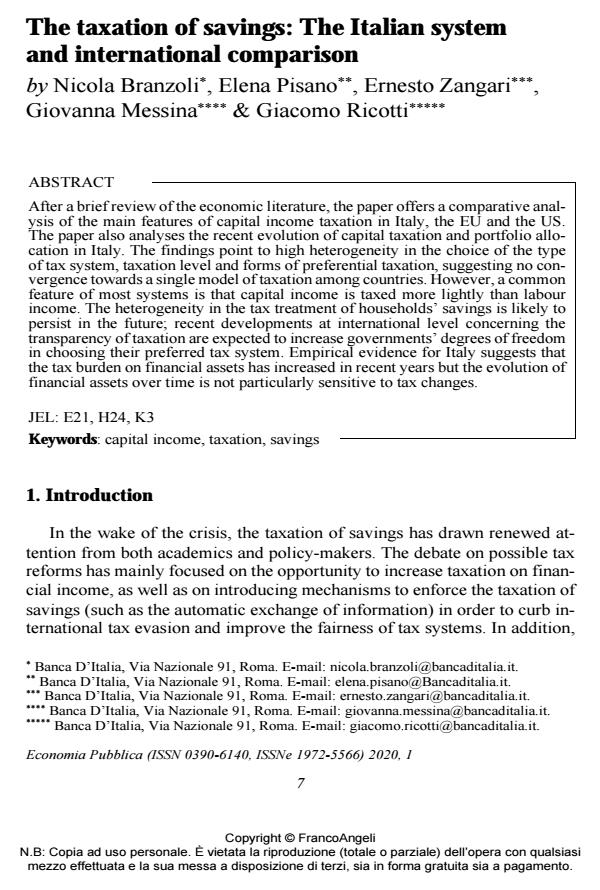The taxation of savings: The Italian system and international comparison
Titolo Rivista ECONOMIA PUBBLICA
Autori/Curatori Nicola Branzoli, Elena Pisano, Ernesto Zangari, Giovanna Messina, Giacomo Ricotti
Anno di pubblicazione 2020 Fascicolo 2020/1
Lingua Inglese Numero pagine 48 P. 7-54 Dimensione file 329 KB
DOI 10.3280/EP2020-001001
Il DOI è il codice a barre della proprietà intellettuale: per saperne di più
clicca qui
Qui sotto puoi vedere in anteprima la prima pagina di questo articolo.
Se questo articolo ti interessa, lo puoi acquistare (e scaricare in formato pdf) seguendo le facili indicazioni per acquistare il download credit. Acquista Download Credits per scaricare questo Articolo in formato PDF

FrancoAngeli è membro della Publishers International Linking Association, Inc (PILA)associazione indipendente e non profit per facilitare (attraverso i servizi tecnologici implementati da CrossRef.org) l’accesso degli studiosi ai contenuti digitali nelle pubblicazioni professionali e scientifiche
After a brief review of the economic literature, the paper offers a comparative analysis of the main features of capital income taxation in Italy, the EU and the US. The paper also analyses the recent evolution of capital taxation and portfolio allocation in Italy. The findings point to high heterogeneity in the choice of the type of tax system, taxation level and forms of preferential taxation, suggesting no convergence towards a single model of taxation among countries. However, a common feature of most systems is that capital income is taxed more lightly than labour income. The heterogeneity in the tax treatment of households’ savings is likely to persist in the future; recent developments at international level concerning the transparency of taxation are expected to increase governments’ degrees of freedom in choosing their preferred tax system. Empirical evidence for Italy suggests that the tax burden on financial assets has increased in recent years but the evolution of financial assets over time is not particularly sensitive to tax changes.
Parole chiave:Capital income, taxation, savings
Jel codes:E21, H24, K3
- Taxation of capital gains upon accrual: is it really more efficient than realisation? Giampaolo Arachi, Massimo D'Antoni, in Fiscal Studies /2022 pp.39
DOI: 10.1111/1475-5890.12255
Nicola Branzoli, Elena Pisano, Ernesto Zangari, Giovanna Messina, Giacomo Ricotti, The taxation of savings: The Italian system and international comparison in "ECONOMIA PUBBLICA " 1/2020, pp 7-54, DOI: 10.3280/EP2020-001001